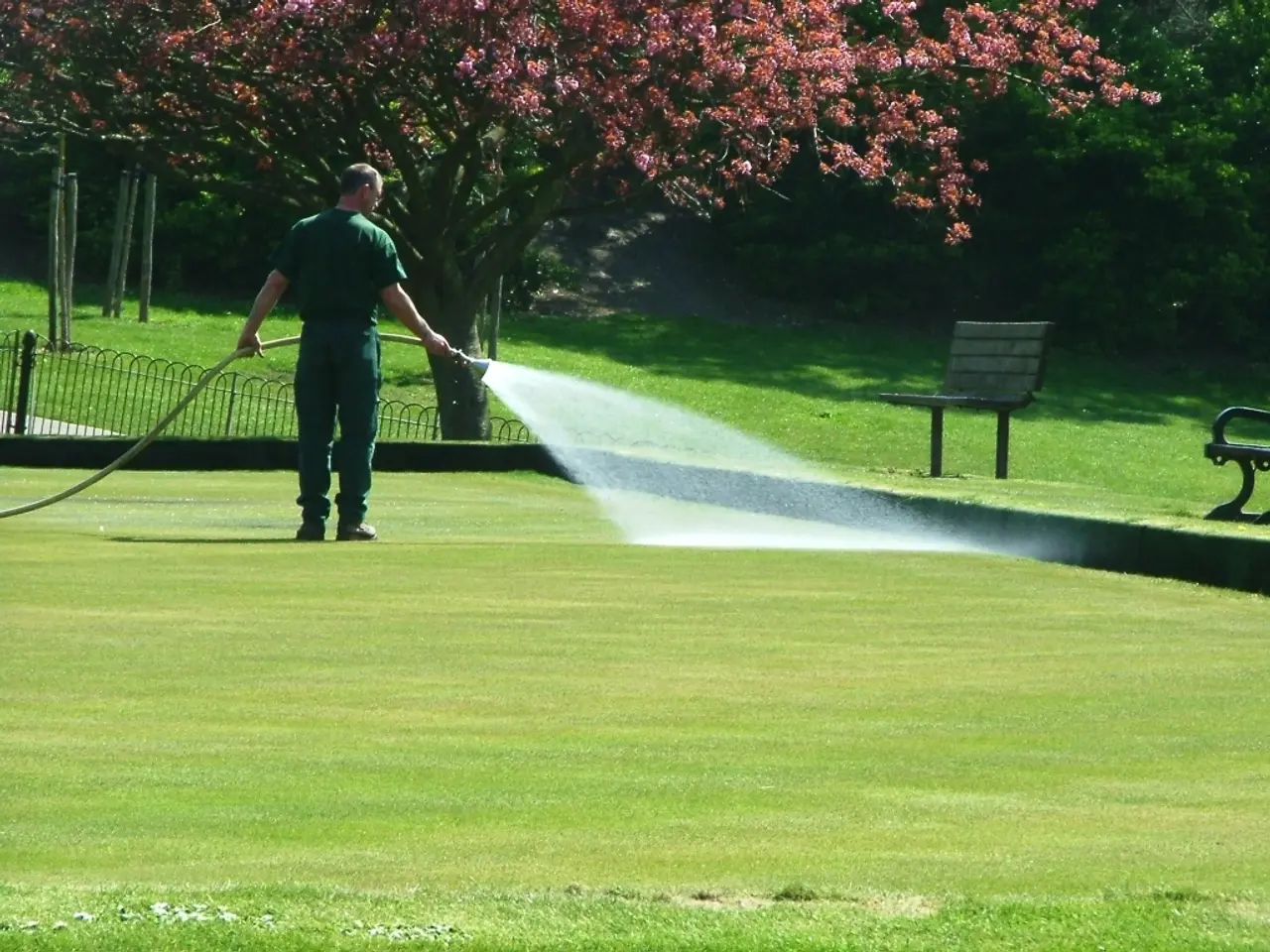Ceasing Watering Newly Sown Grass: Timing Guidelines
The Importance of Watering New Grass Seed Correctly
Establishing a lush, green lawn begins with proper watering of new grass seed, according to turf grass specialists. Adequate watering is essential for grass seed to germinate, grow, and develop deep roots that enhance the lawn's longevity and appearance.
New grass seeds need constant surface moisture for successful growth, but the frequency, duration, and depth of watering can significantly influence the outcome. Turf grasses come in cool-season and warm-season varieties, but their watering requirements are generally similar.
Germination PhaseThroughout the germination phase, which lasts about 10 to 14 days, it's crucial to maintain steady moisture in the topsoil. The seeded area should be watered multiple times daily, ideally one or two times a day, especially in hot or windy conditions. Aim for light, frequent watering to keep the soil damp without creating puddles or excess moisture that could lead to rot or mold.
Establishment PhaseDuring the establishment phase, which lasts approximately 10 days, maintain regular watering to prevent the soil from drying out. Seedlings need adequate moisture to develop strong roots and healthy shoots. Gradually reduce the frequency of watering as grass starts to grow, but continue to water regularly to prevent the soil from drying completely between watering sessions.
Root Development PhaseIn the root development phase, the focus shifts to watering less frequently but more deeply to encourage deep root growth. Established lawns typically require about 1 to 1.5 inches of water per week, delivered in fewer sessions. Water deeply to wet the soil to a depth of 6 to 8 inches, which encourages roots to grow downward and strengthen the lawn's drought resistance.
Precautions in WateringWhile it's essential to keep new grass seed moist, avoiding over-watering is equally vital. Over-watering can lead to seed rot, fungal diseases, or drowning of the seeds before germination. It also produces shallower, weaker roots and increases the risk of weeds. Conversely, under-watering can impede germination, leading to patchy coverage and weak roots that struggle in drought conditions.
Watering TipsThe best time to water is early in the morning to minimize evaporation and reduce the risk of disease. Maintaining healthy grass requires careful watering, but following these guidelines should help you establish a beautiful, lush lawn.
Martha Stewart emphasizes the importance of frequent watering during the germination phase of new grass seed, suggesting that the seeded area should be watered multiple times daily for about 10 to 14 days. In the establishment phase, she recommends maintaining regular watering to prevent the soil from drying out and promote healthy shoot growth. During the root development phase, Stewart advises watering less frequently but more deeply to encourage deep root growth, which enhances the lawn's drought resistance.







